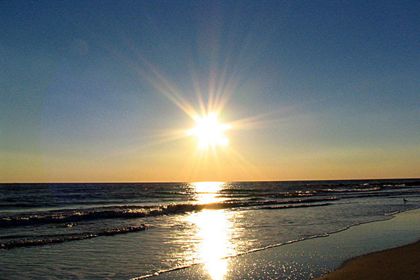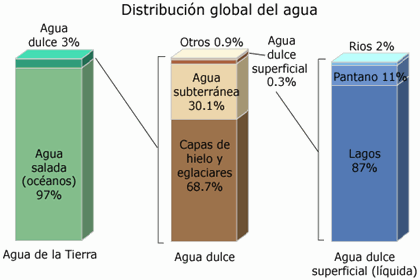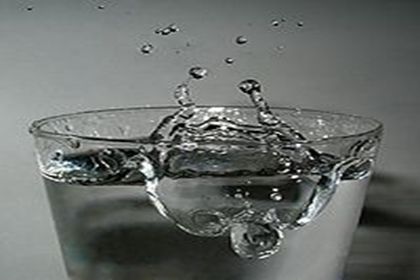Water in the world

The water that we drink today has been used during millions of years. Both the quantity and the characteristics of this water have been conserved almost without changes since the planet Earth was formed. The water is present in three states: liquid, gas (vapour) and solid (ice) and is constantly recycled, that is to say, it purifies and renovates itself working together with the sun, the earth and the air to maintain Natures balance.
A transformation has taken place and what started in vapour form has gradually, throughout the centuries, turned into water, at first with a low level of salinity and later a higher level due to the minerals dissolved by the rain that started to fall when the Earth cooled down.

Of the total of 1.400 million cubic kilometres of water that exist on Earth only 33 million cubic kilometres are fresh water. Of this volume 68,7% is in ice form in the polar ice caps and glaciers and 30,5% corresponds to unobtainable subterranean water which means that only 0,9%, some 140.000 cubic kilometres, of the existing fresh water can be used.
This last quantity, which corresponds to surface and rain water, has a dynamic character since it is constantly in movement fulfilling a continuous cycle, known as the water cycle, which makes life possible on this planet.
The conclusion is that, taking into account that saltwater and ice-caps cannot be used as drinking water, only a very small percentage of the Earth’s water is suitable for human consumption. The possibility of water shortage on this planet is very high.
Water is very important for living beings since most biochemical reactions can only take place with the help of water. That is to say, water transports dissolved substances between different parts of our body as, for example, in the blood stream. The blood serum has a water base and 65 % of the weight of a human being corresponds to water with a salinity of 0.9 %.
Apart from being necessary for the internal function of the human body, water is also essential for people in other many ways. Water is used for personal and domestic cleanliness, for cooking and drinking, in central heating systems and to eliminate our waste.

The consumption of water has increased manifold over the last h



 Castellano
Castellano  Valencià
Valencià  Deutsch
Deutsch  English (UK)
English (UK) 